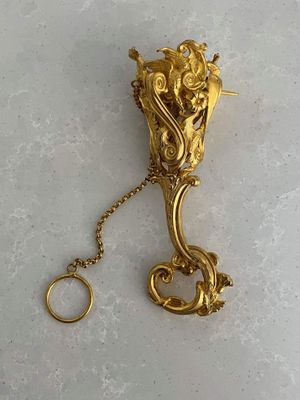

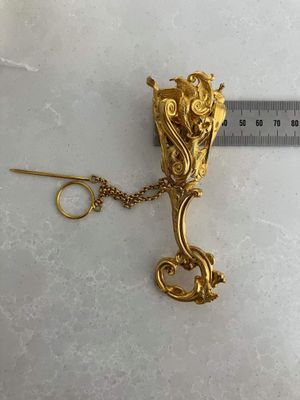
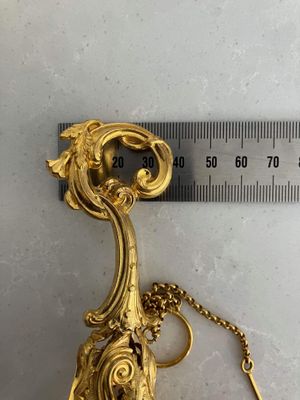
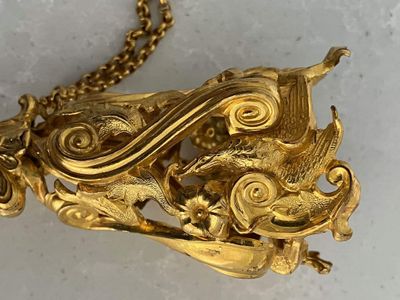
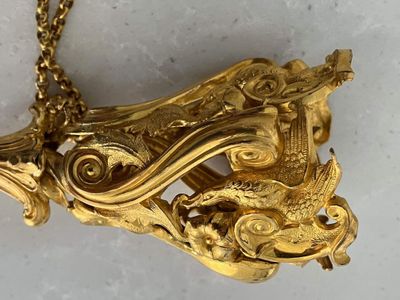
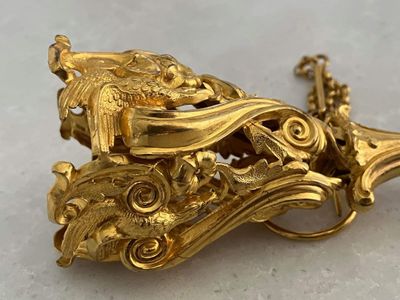
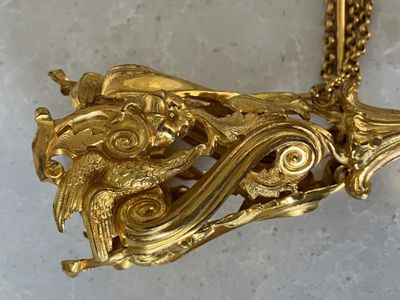

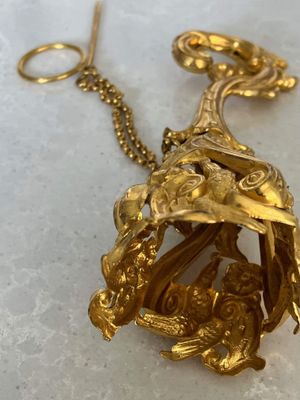
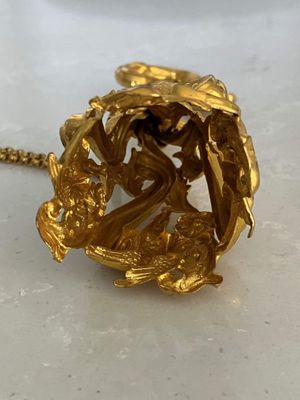
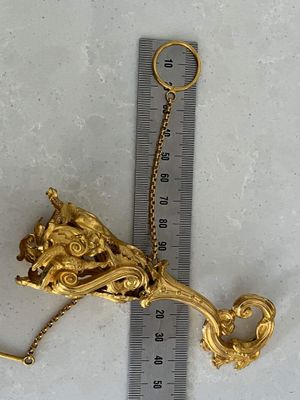
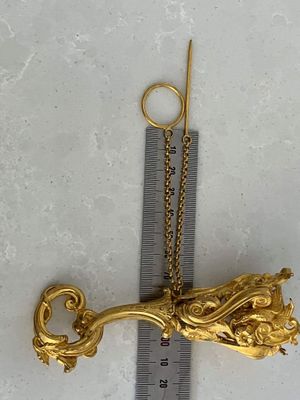
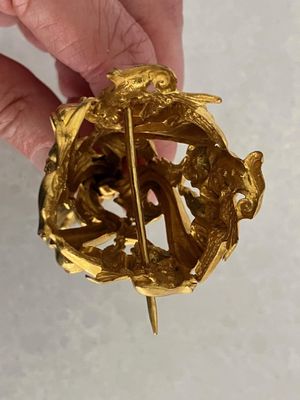
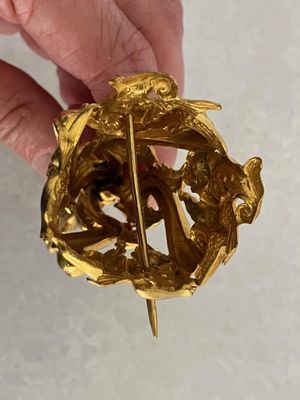
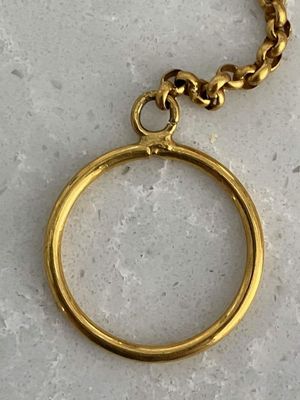
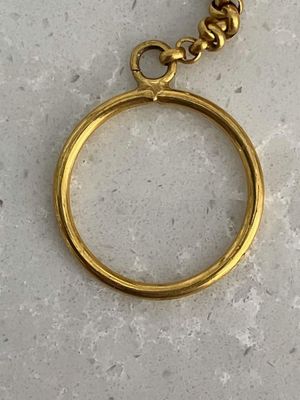
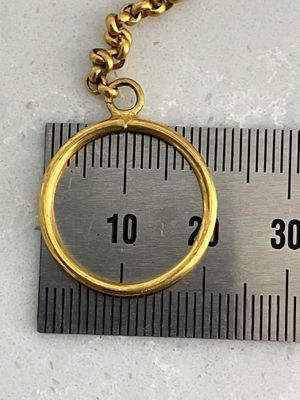
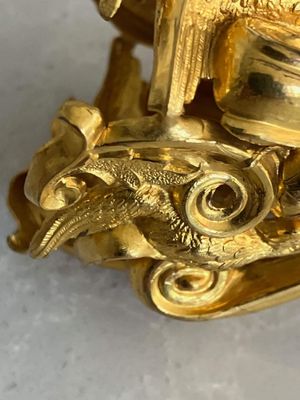
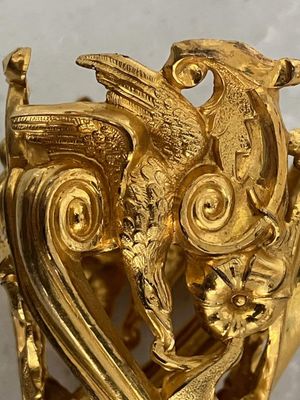
Victorian gilded metal bouquet holder
$549.00
This stunning Victorian posey holder or tussie mussie would be amazing for a wedding or elegant event. It has been beautifully made with bold scrolls, flowers, foliage and large birds with leaf in beak. The holder was made in four parts that have been very carefully soldered together to form the vase. The pin is pushed through the posey to hold the flowers in place and the handle was stamped with two repeats with floral decoration. The bottom of the handle loops up creating a ring at the end of the handle. It is in excellent condition with only minor age appropriate wear. The gilding is in remarkable condition for its age.
Flowers used for personal adornment were a popular, almost mandatory, fashion accessory in the nineteenth century. Small bouquets, called nosegays, posies, or tussie mussies were carried by debutantes, matrons, and girls, and they were a popular gift in the mid to late 1800s among friends and suitors. The choice of flowers was also meaningful with Victorian floriography assigning complex meanings to individual flowers. A lot could be said silently through the composition of a bouquet. They were typically created in concentric rings of flowers, tightly wound together, and were often tied with ribbon or placed in a bouquet holder depending on the tastes and fashions. By the 1830s carrying small bouquets of flowers in decorative holders was an established fashion accessory of the upper class and royalty of Europe. These small accessories, also known as posy holders, ‘porte-bouquets’, and ‘bouquetiers’ were both decorative as well as useful. Queen Victoria helped popularize the bouquet holder, and she is seen holding one in her portrait “Queen Victoria at the Drury Lane Theatre, November 1837” painted by E.T. Parris.
I managed to find an almost identical example in the collection of the Smithsonian Gardens. Theirs is missing its ring and has a slightly different pin to hold the flowers in place but the design is the same. They suggest theirs may have been made in Birmingham but I think French origin is much more likely as they were known for their ormolu posey holders. You can see their example here. It was most likely made in the mid to late 19th century (1840-1880).

